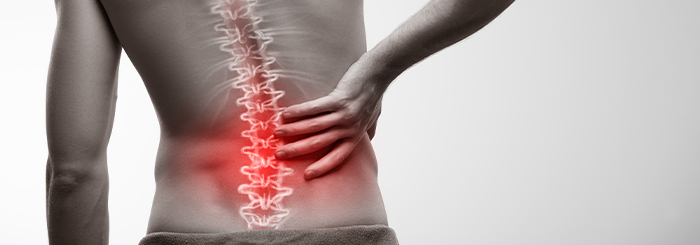Degenerative disc disease (DDD) is a common consequence of the natural aging process. By the time we turn 50, nearly all of us will show evidence of some form of spinal deterioration when subjected to radiologic imaging, whether it’s spinal stenosis, osteoarthritis or disc herniation (or any combination of the three).
Share this Post
Historically — and unfortunately — there have been few options to alleviate the pain of these conditions; the loss of disc soundness and its accompanying discomfort are often treated with anti-inflammatory/pain medications and/or physical therapy to strengthen the surrounding muscles, with surgery as a last resort when these conservative treatments lost their effectiveness. Today, however, research is validating a new treatment option: stem cell therapy. First, though, we need to consider the anatomy of the back, especially if we want to understand why DDD is so prevalent and so hard to treat and why stem cell therapy for degenerative disc disease now offers exciting new promise:
What is Degenerative Disc Disease?
The back is composed of three main regions: the cervical, thoracic and lumbar spines; each region contains vertebrae with spongy intervertebral discs acting as shock absorbers between each vertebral segment. These discs not only protect our brains and spinal cords by mitigating the effects of bodily movement and impact, they also provide stability and flexibility to our spinal column, allowing us to stand straight or bend as we wish.
As we age, however, the repeated wear and tear our bodies endure causes the discs separating our vertebrae to shrink and become brittle. The loss of the support and cushion of healthy discs then creates pressure on the spinal cord (and frequently the nerves surrounding it) as the vertebrae condense or fully collapse upon one another. This most often results in pain and is hard to treat since there has previously been few options for regenerating something that has undergone degeneration. That’s why stem cell therapy is now so compelling for physicians and their patients.
What is Stem Cell Therapy?
Unlike most cells in our bodies that can only divide into cells with their same specialized function (skin cells give rise to skin cells, blood cells to blood cells, etc.), stem cells are undifferentiated and can replicate over and over into one of many (if not every) different type of cell in the body. This is especially important because it means that doctors can take stem cells from one area of the body, apply them to a degenerated area with damaged cells incapable of their own repair.
Stem cell therapy for degenerative disc disease, in particular, uses mesenchymal stem cells taken from adipose and bone marrow tissue. Once harvested from a patient, these stem cells are carefully counted and prepared into an aspirate that is then reinjected into the affected area of the same patient (i.e., an autologous treatment). Clinical trials show that these mesenchymal stem cells work to reduce inflammation, regulate the patient’s own body’s immune response and even retard further degeneration. In addition to treating many degenerative back conditions, stem cell therapy is also being used to manage other conditions, such as soft tissue injuries (i.e. partial Achilles Tendon tear), degenerative joint disease, erectile dysfunction and more.
Learn More Now
For more information about using stem cell therapy for degenerative disc disease, contact our team at ThriveMD. Our medical director, Dr. Scott Brandt, is board certified with years of experience across the breadth of regenerative medicine and interventional pain management. He takes the time to review each of his patients’ histories in order to form individualized treatment plans that offer the best chance for success.


